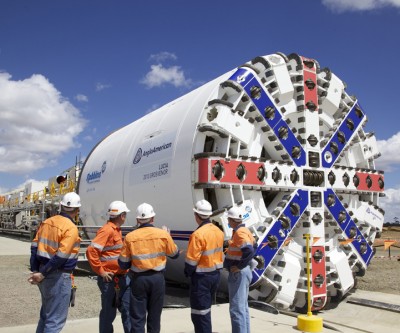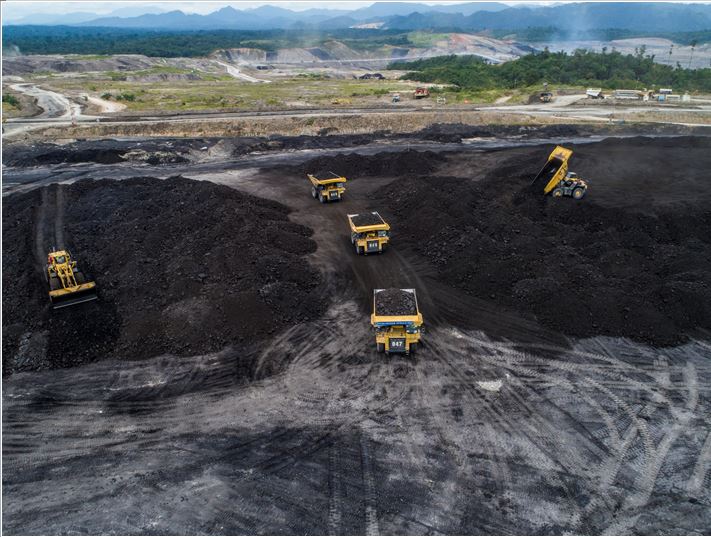In addition, the industry is implementing recommendations from the Mine Safety Technology and Training Commission, Watzman told the subcommittee. Among them is the development of risk-based management plans based on a risk assessment conducted at each mine. The end result of this cooperative effort with the National Institute for Occupational Safety and Health (NIOSH) will be operational tools that will help every company identify and address significant hazards before they evolve into situations that threaten lives and property. “This new paradigm promises to have far-reaching implications as it requires us to look at mining differently and to train miners differently,” said Watzman.
Another spokesman for the NMA today reinforced NMA’s strong support for climate change legislation that provides sufficient carbon capture and storage (CCS) technology funding, establishes legal and regulatory frameworks for managing CCS and reducing emissions, contains costs associated with this effort and maintains US industrial competitiveness in a global economy.
Reinforcing the vital role of technology in effectively mitigating climate change, NMA President and CEO Kraig R. Naasz told the House Subcommittee on Energy and Air Quality that “meaningful efforts to address climate change in a sustainable manner will depend upon the development and deployment of advanced clean coal and carbon capture and storage (CCS) technologies.”
He emphasised that timely and widespread deployment of CCS technology, both in the US and around the world, holds the key for effectively reducing global emissions of greenhouse gases while sustaining economic growth. Naasz pledged NMA’s support for “The Carbon Capture and Storage Early Deployment Act” (H.R. 6258) sponsored by subcommittee Chairman Rick Boucher (D-Va.) and more than a dozen colleagues because the bill recognises that CCS technology is imperative for addressing both the environmental and energy challenges in the US and around the world.
“Coal is a prime source of energy in the US and throughout the world and is likely to remain so as global energy demand continues to increase,” said Naasz. Because of its abundance and affordability, coal is projected to generate a growing share of electricity domestically and throughout the fast-growing economies of the developing world. With these factors in mind, Naasz called on Congress to promote the demonstration and widespread deployment of CCS and other advanced coal technologies by establishing a dedicated source of funding, as well as financial and other incentives “necessary to achieve significant advances in such technologies.”
Naasz said the penalties for failing to get climate change policy right are starkly underscored in several recent reports. The National Energy Technology Laboratory (NETL) in an April 28 analysis warned of “spectacular price increases for households and industry” if climate policies force a dramatic shift away from coal, which generates half of the nation’s electricity. In a 2007 report, the National Electric Reliability Council found that many regions of the country already face an imminent shortage of electricity generating capacity, a condition Naasz said is exacerbated by market uncertainties and a patchwork of state policies thwarting new coal-based generation.
Additionally, Naasz observed that in a joint statement this month, the national science academies of the G8+5 nations specifically urged that CCS technologies “should be developed and deployed . particularly for emissions from coal,” which the statement added will “continue to be a primary energy source for the next 50 years for power and other industrial processes.”
The imperative to develop and deploy CCS technology and end uncertainties now impacting US climate policy is especially important to ensure our continued economic growth and long-term energy security. Although the 27 coal-based generating units and plants now under construction in the U.S. are a promising commitment to meeting future energy needs, said Naasz, still more capacity would likely be underway were it not for market uncertainty surrounding anticipated efforts to reduce greenhouse gas emissions.
 Underground coal mine operators are moving aggressively to comply with the Mine Improvement and New Emergency Response (MINER) Act of 2006 at the same time as they voluntarily push to formalise new risk management practices designed to help the industry identify, eliminate and manage conditions and practices that have the greatest potential to cause injury, said a safety official for America’s National Mining Association (NMA) in testimony today before the Senate Subcommittee on Employment and Workplace Safety.
Underground coal mine operators are moving aggressively to comply with the Mine Improvement and New Emergency Response (MINER) Act of 2006 at the same time as they voluntarily push to formalise new risk management practices designed to help the industry identify, eliminate and manage conditions and practices that have the greatest potential to cause injury, said a safety official for America’s National Mining Association (NMA) in testimony today before the Senate Subcommittee on Employment and Workplace Safety.



